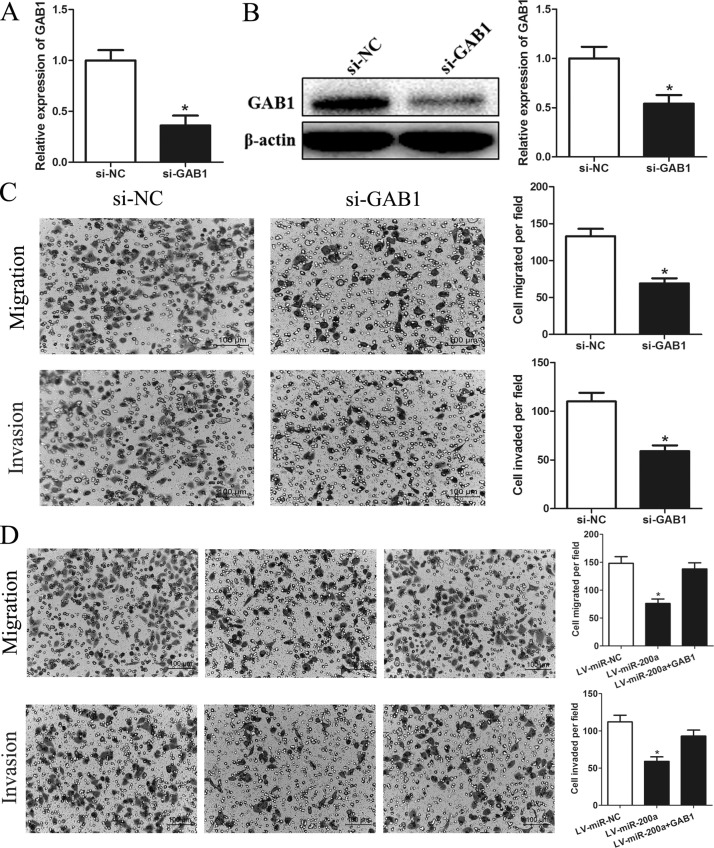The following was originally published in Volume 25, Number 1, pages 1–10 (DOI: https://doi.org/10.3727/096504016X14685034103798). Information in Figure 5C was incorrectly displayed. The corrected Figure 5 is provided here.
Abstract
MicroRNA-200a (miR-200a) is frequently downregulated in most cancer types and plays an important role in carcinogenesis and cancer progression. In this study, we determined that miR-200a was downregulated in hepatocellular carcinoma (HCC) tissues and cell lines, consistent with the results of our previous study. Because a previous study suggested that downregulation of miR-200a is correlated with HCC metastasis, we aimed to elucidate the mechanism underlying the role of miR-200a in metastasis in HCC. Here we observed that overexpression of miR-200a resulted in suppression of HCC metastatic ability, including HCC cell migration, invasion, and metastasis, in vitro and in vivo. Furthermore, bioinformatics and luciferase reporter assays indicated that GAB1 is a direct target of miR-200a. Inhibition of GAB1 resulted in substantially decreased cell invasion and migration similar to that observed with overexpression of miR-200a in HCC cell lines, whereas restoration of GAB1 partially rescued the inhibitory effects of miR-200a. Taken together, these data provide novel information for comprehending the tumor-suppressive role of miR-200a in HCC pathogenesis through inhibition of GAB1 translation.
Key words: miR-200a, Hepatocellular carcinoma (HCC), Grb2-associated binding protein 1 (GAB1), Invasion and migration, Metastasis
Figure 5.
Alterations of GAB1 levels influence the effects of miR-200a on HCC cells. (A) Quantitation of GAB1 mRNA levels in SMMC-7721 cells by RT-PCR after transfection with siRNA targeting GAB1 (si-GAB1) or a negative control siRNA (si-NC). (B) Detection of GAB1 protein in SMMC-7721 cells by Western blot analysis after transfection with GAB1 siRNAs or si-NC. (C) GAB1 knockdown inhibited SMMC-7721 cell migration and invasion. (D) GAB1 reintroduction into SMMC-7721 cells partially rescued the miR-200a-mediated inhibition of cell migration and invasion. Migrated and invaded cells were counted in five randomly selected areas under a 200× microscope field. *p < 0.05 compared to the control.



